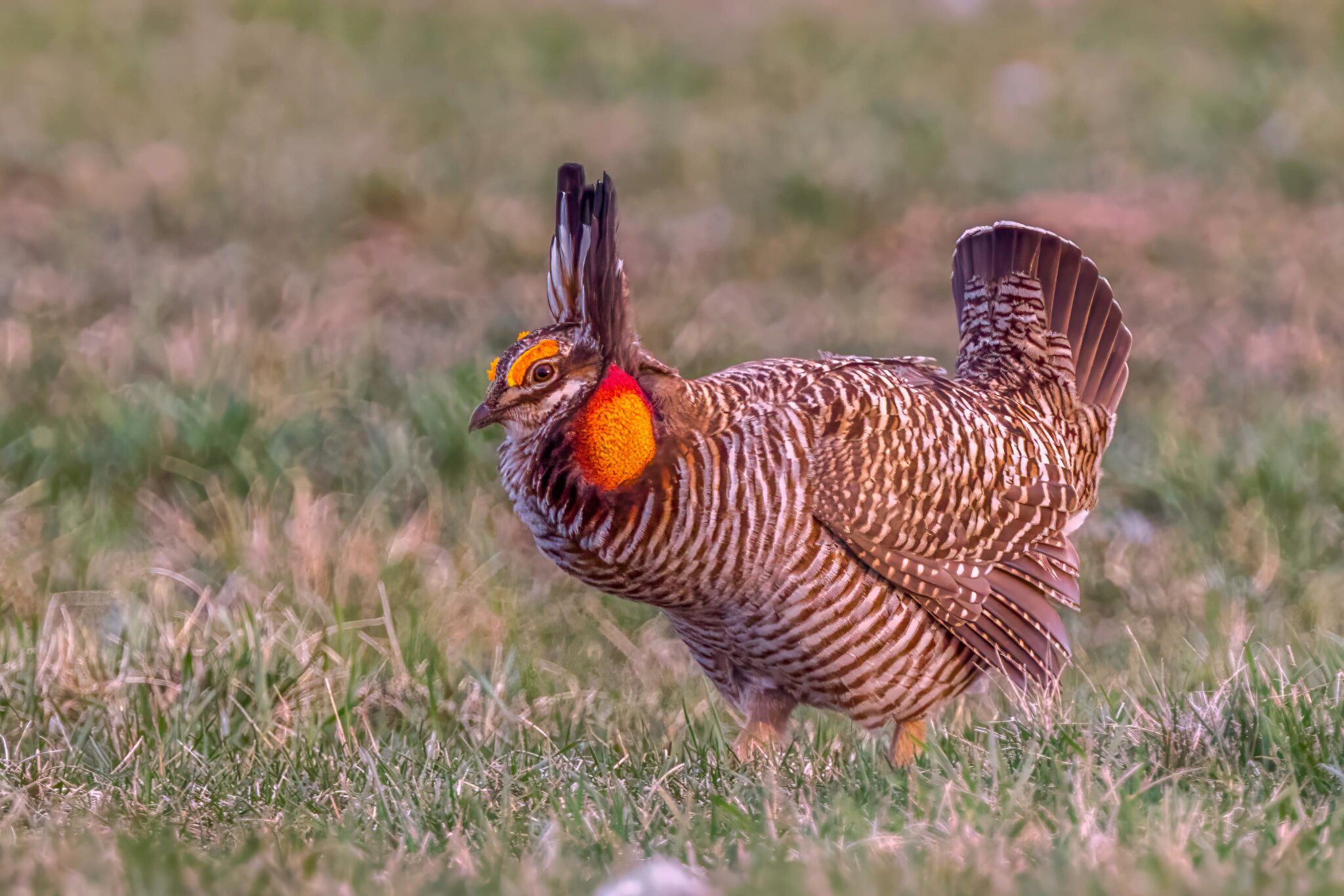The Greater Prairie-Chicken and Lesser Prairie-Chicken are famous for their unique mating dances performed on special display grounds, called leks, each spring. Their genus name, Tympanuchus, comes from the Ancient Greek; its meaning, “holding a drum,” refers to this bird’s booming calls, which are amplified by inflatable neck sacs.
The prairie-chicken breeding season begins in early spring and continues until June. Males establish a communal “booming ground” in a flat, raised territory with short grass, where eight to 20 males display together and boom to attract females. Males fight among themselves for territories on the lek; these territories may be as small as 20 or 30 feet across, and one or two males usually emerge as dominant and perform the majority of mating.
During its elaborate display, the male dances and struts with his head low and wings held stiffly at his sides, pinnae flared and gular sacs inflated. He may jump into the air with loud cackling and wing-fluttering. The male’s hollow, booming calls can be heard up to a mile away.
Male prairie-chickens stay on their display grounds for almost two months; after mating, they have no further role in nest-building or chick rearing.

Great shot of the Gr. Prairie Chicken and the informative information you added. I appreciate the info about the birds’ mating display.